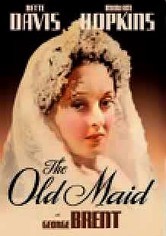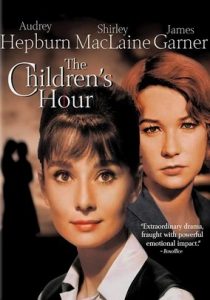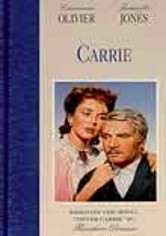The Old Maid-1939
Director Edmund Goulding
Starring Bette Davis, Miriam Hopkins
Scott’s Review #883
Reviewed April 3, 2019
Grade: B-
Not one to dare criticize the legendary Bette Davis (would there be much to criticize anyway?), her starring turn in The Old Maid (1939) is not one of her best-remembered films through no fault of her own.
With compelling characters and a nice flow to a short one-hour and thirty-five-minute experience, the films suffer from too much melodrama and soap opera style overacting to warrant a sturdy recommendation.
The overwrought drama may have been riveting at the time of release, but now feels dated and dusty.
Davis portrays Charlotte, a modestly attractive young woman living in Philadelphia during the Civil War era. When her cousin Delia (Miriam Hopkins) discards her beau Clem Spender (George Brent) in favor of marrying another well-to-do man, Charlotte and Clem begin an affair that results in the birth of baby Tina.
When Clem is killed in battle, Charlotte opens a home for orphans as a way of hiding Tina’s illegitimacy.
As the years go by, Delia’s scheming results in Tina not knowing her birth mother, and Charlotte suffers away like an old maid yearning to confess the truth to Tina before the young woman marries.
The film’s highlight naturally is Ms. Davis, as she makes her character’s plight emotional and sympathetic.
Especially in 1939, the character is written as a strong and intelligent female with a will of her own. Davis portrays all qualities with passion and gusto, only adding to the perplexing, wishy-washy indecisiveness of the character.
Why does Charlotte go year after year, living under the same roof with her daughter but under the constant guise of only being her aunt and allowing Delia the title of the mother?
Charlotte is supposed to ensure that Tina receives a proper, upper-middle-class, respectable upbringing while being a part of her life.
The film does wonders to portray the roles of aunt and mother as opposites. As a teenager, Tina praises Delia while considering Charlotte matronly and dull as dishwater due to her overbearing and militant respect for rigidity.
Regardless, many facets of the story seem like plot setups to create drama and story points leading to vendettas and reoccurring conflict between Delia and Charlotte.
The fact that Charlotte is so strong and stoic on the surface is also a detraction as the audience is left frustrated over and over at the cousin’s decision not to tell the truth to Tina until the final scene when she is marrying a rich boy and even then, the scene is a disappointment.
The decision for Delia to adopt Tina at the age of twenty to finally allow her respectability and her fiancee’s parents’ approval is weak and story-dictated. The filmmaker attempts never to enable Charlotte any happiness or satisfaction, which is depressing, especially given Davis’s brash personality.
Despite the story issues, The Old Maid has some positives, including a well-dressed set and gorgeous costumes, as wedding after wedding occurs over the film’s twenty-year run.
The aging of the characters is also successfully done, specifically with Davis, as she goes from an impressionable youngster to graying and haggard over the years with good lighting and camera angles.
The Old Maid (1939) is a film of moderate interest as it includes some well-developed characters and a subject matter that might have been daring for the time.
The film, decades later, has a conventional slant and too many story plot setups better served for daytime television. The overall result is a too soapy style for much enjoyment but is saved by the graceful and powerful acting of Bette Davis, easily the best thing about the film.


